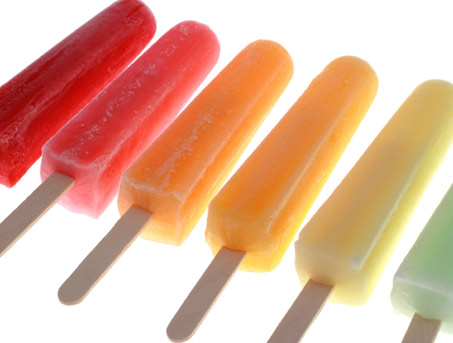On Ecto cooler

I really loved an article last year in the New Yorker about Givaudan, the main company that manufactures the tastes you find in processed food. You can’t get to the article anymore, but email me, and I’ll send it to you if you want. It discusses the job of flavorists, who tint our carbonated national water supply and vats of corn pulp with evocative chemical compositions.
Flavorists are genre-benders creating tastes (processed in the brain mostly through the nose) by combining chemical elements of what you think you remember about them, understanding that that memory is infected by any number of interferences. There is color (Coca-Cola is actually a citrus beverage); the temporal interplay of volatile compounds affecting your palate (“an experimental gum that changed flavors three times when chewed; a ‘sequential release’ cereal bar that went from blueberry to orange in my mouth”) and the success of past marketing campaigns in altering your perception about what good even is. Witness the triumph of Red Bull:
Hagen told me that her favorite white-space flavor—the one she wished she had created—was Red Bull, because it succeeded in getting consumers to embrace the surreal…Today, it is virtually impossible to market an energy drink that does not have the same unbalanced characteristic that Red Bull has.
“It scores terribly when you put it in front of consumers who don’t think it is an energy drink,” a salesman for one of the top flavor houses told me. “But the spiky note in there now defines ‘energy.’ So when I build energy flavors with our client it has got to taste bad. If you give the consumer a great-tasting orange flavor for an energy drink, their liking drops way down, because it doesn’t have that ‘energy note’ they expect.”
The art that flavorists are doing…I won’t go to the banality that “I wish it’s what artists were doing,” but elements of it—a purposeful, mindful labeling of the things that bring joy; a basic respect for (as in not trying to combat or deny) the way that perception lies; an awareness of the dimensions of an experience on a sensual as opposed to a theoretical level, are elements of creativity I wish were given more of a platform, and not just when they stand to ripple the marketplace.
I’m so often drawn to synesthesia because what I want to know is how can you take an experience or work of art and have more from (with) it. Not more about it, or dissecting it, just—upon it, alongside it. Aligning a sense-as-parallel rather than thought-as-superior is one of the handier ways I’ve found to do this. So when I read this:
[Hagen’s] office resembles a walk-in high school locker, if such a thing existed. The walls are covered with magazine clippings, photographs, and Post-its; a clock-size swatch with a blue kangaroo painted on it; and a dry-erase board with lists of words meant to inspire flavor creation (“baobab,” “jujube,” “mamoncillo”). Tacked here and there are paint chips from Benjamin Moore, whish she once used as aides to memorize the aromas of approximately a thousand chemicals. California Lilac was ethyl isovalerate; Mellow Yellow was gamma octalactone.
I intuit a way that criticism can be not dissimilar to what Hagen is doing with her sound-words and visual aids. If fabricated flavors are the original works of art, I wish our conversations about them could be more often like finding a flavor sound for them (a device that adds value back to the original work) and less often circularly gesticulating a theory of the flavor’s meaning.
